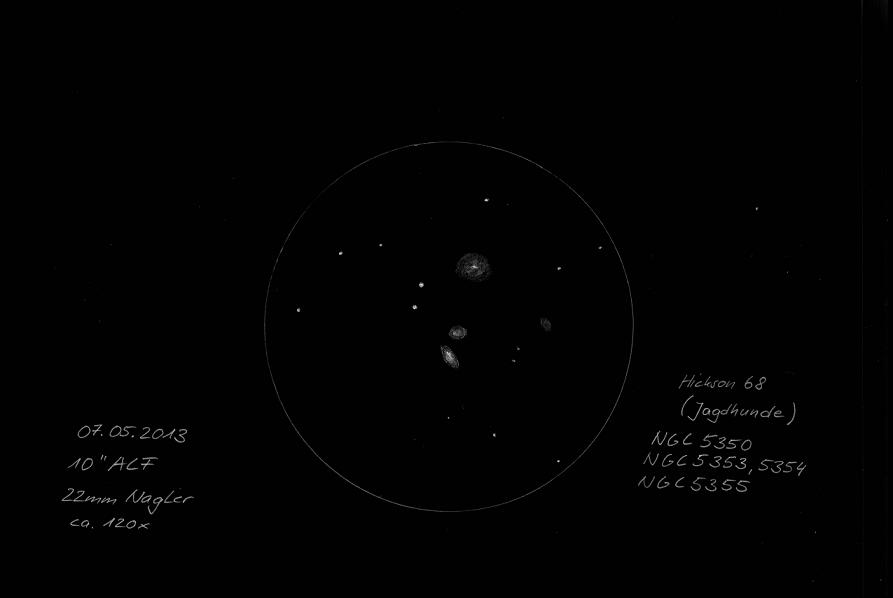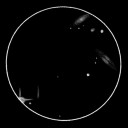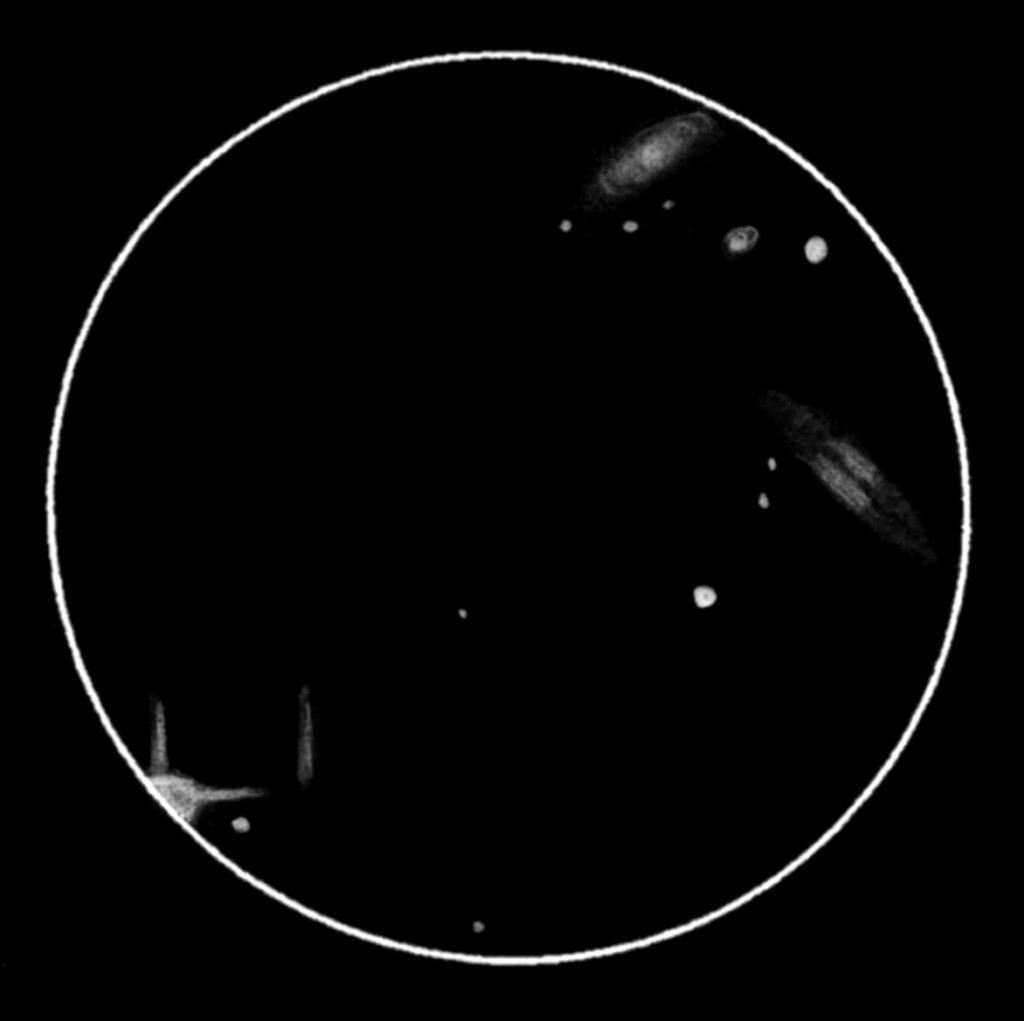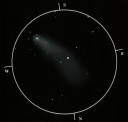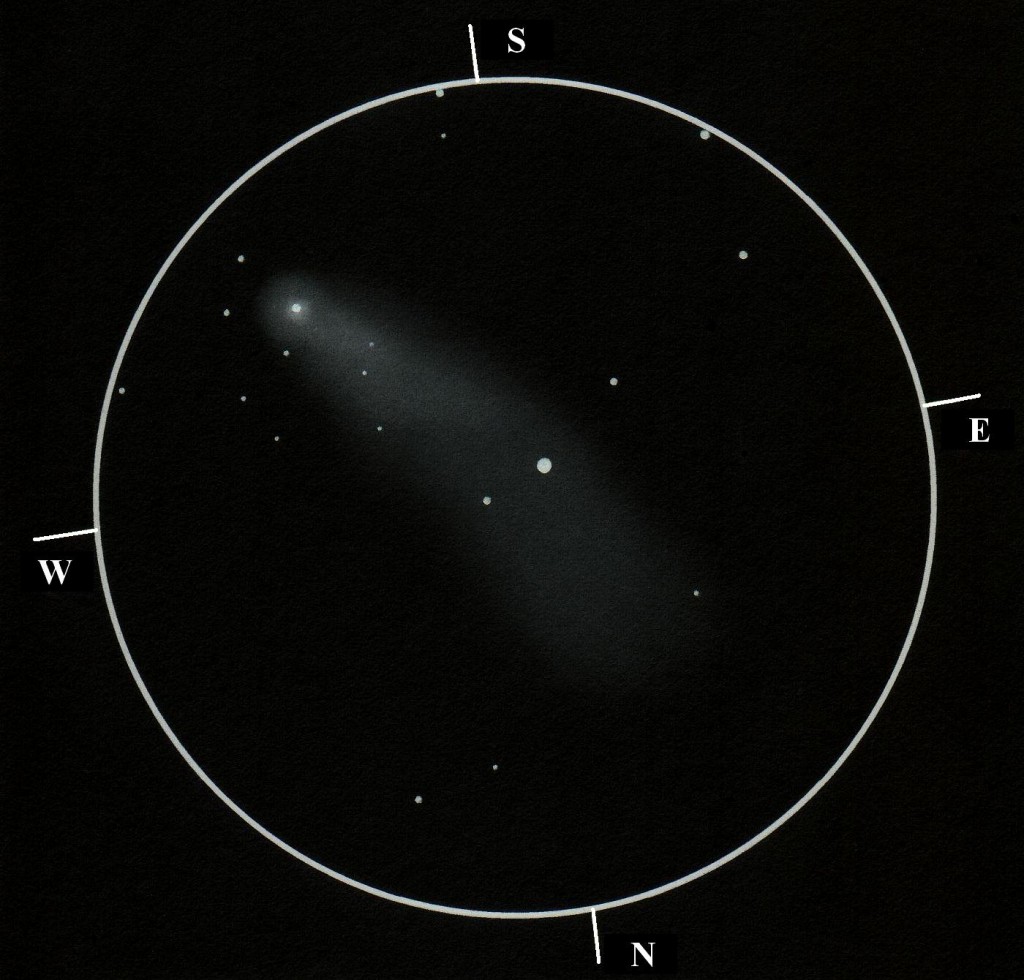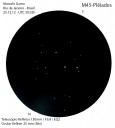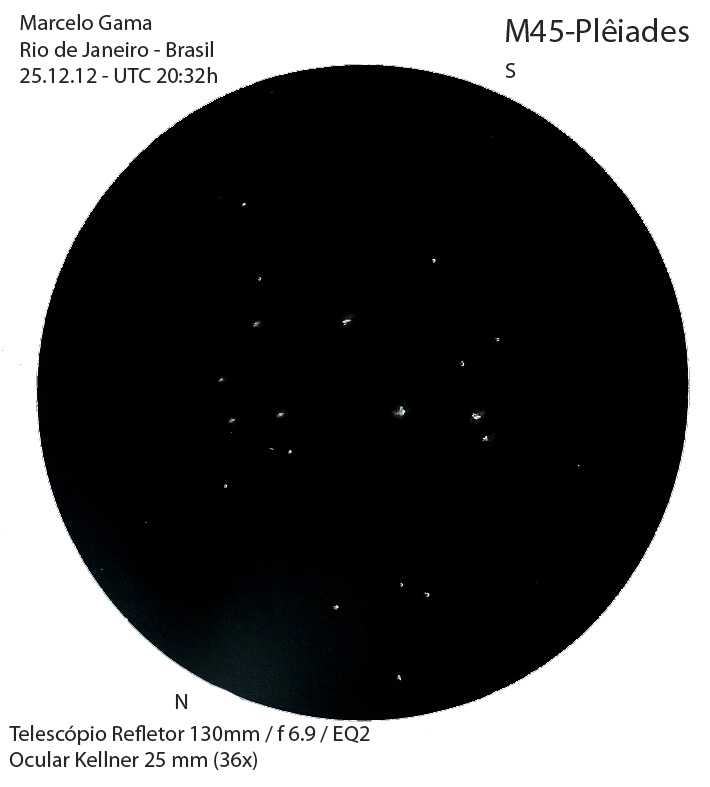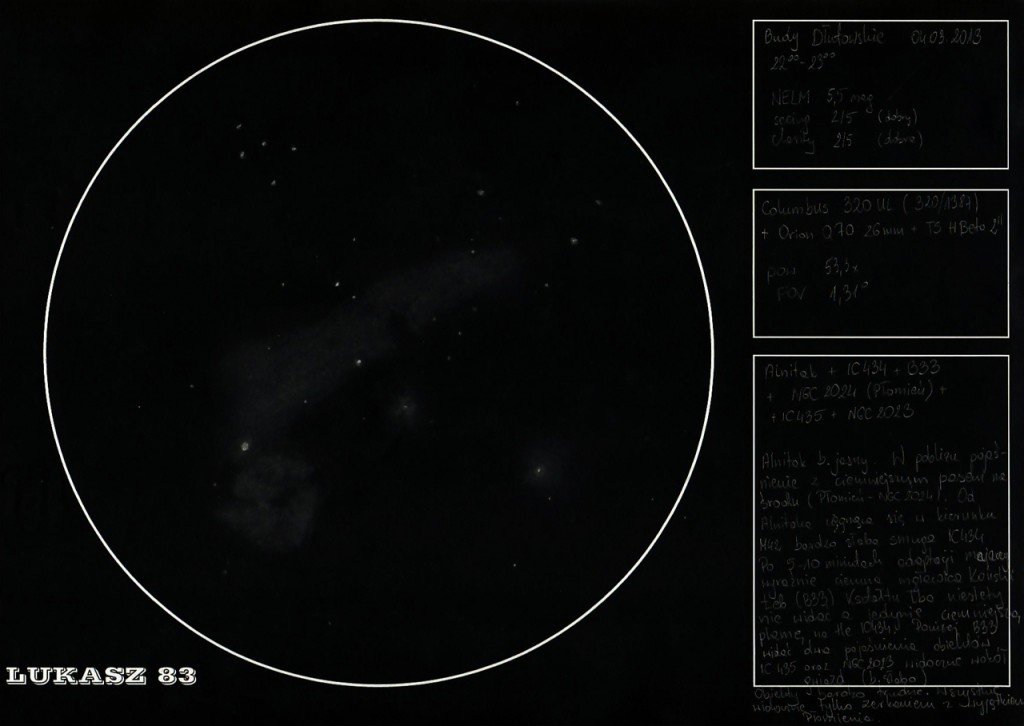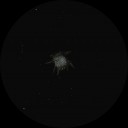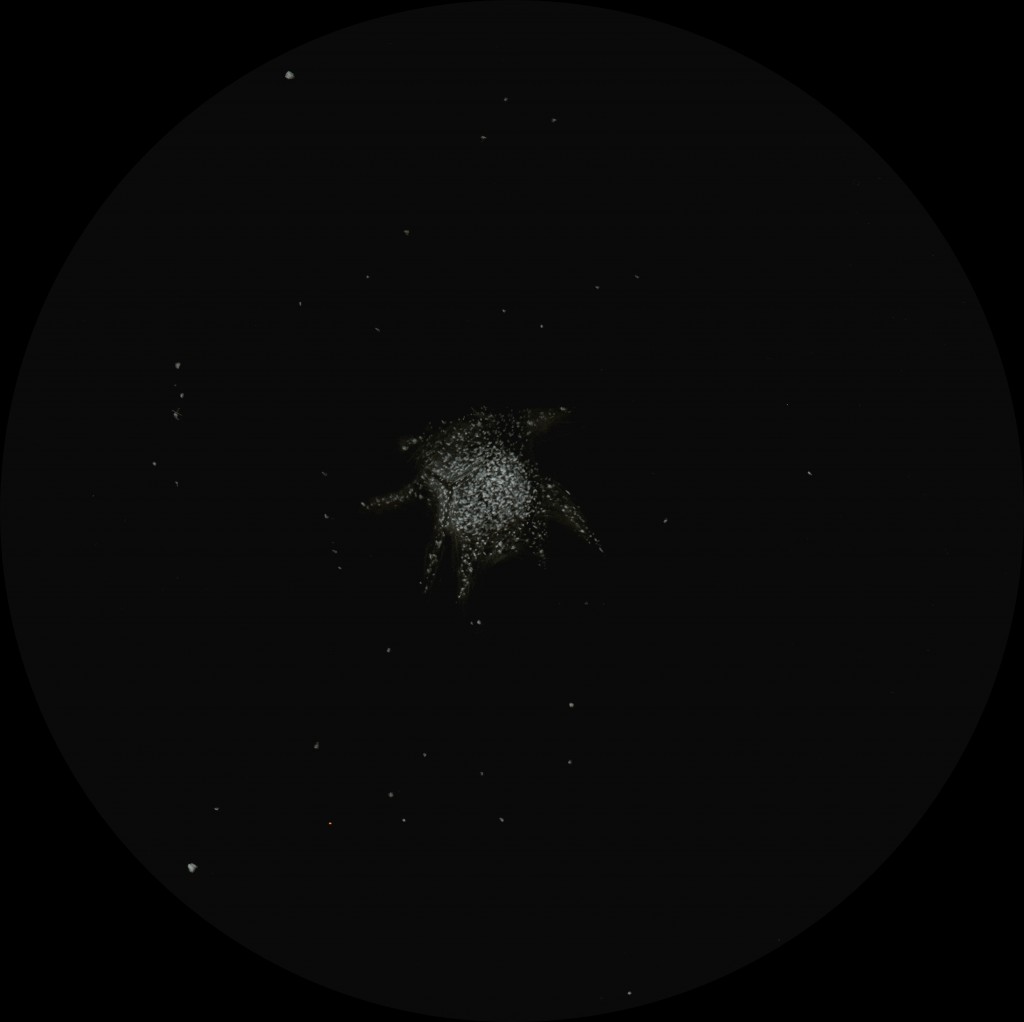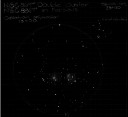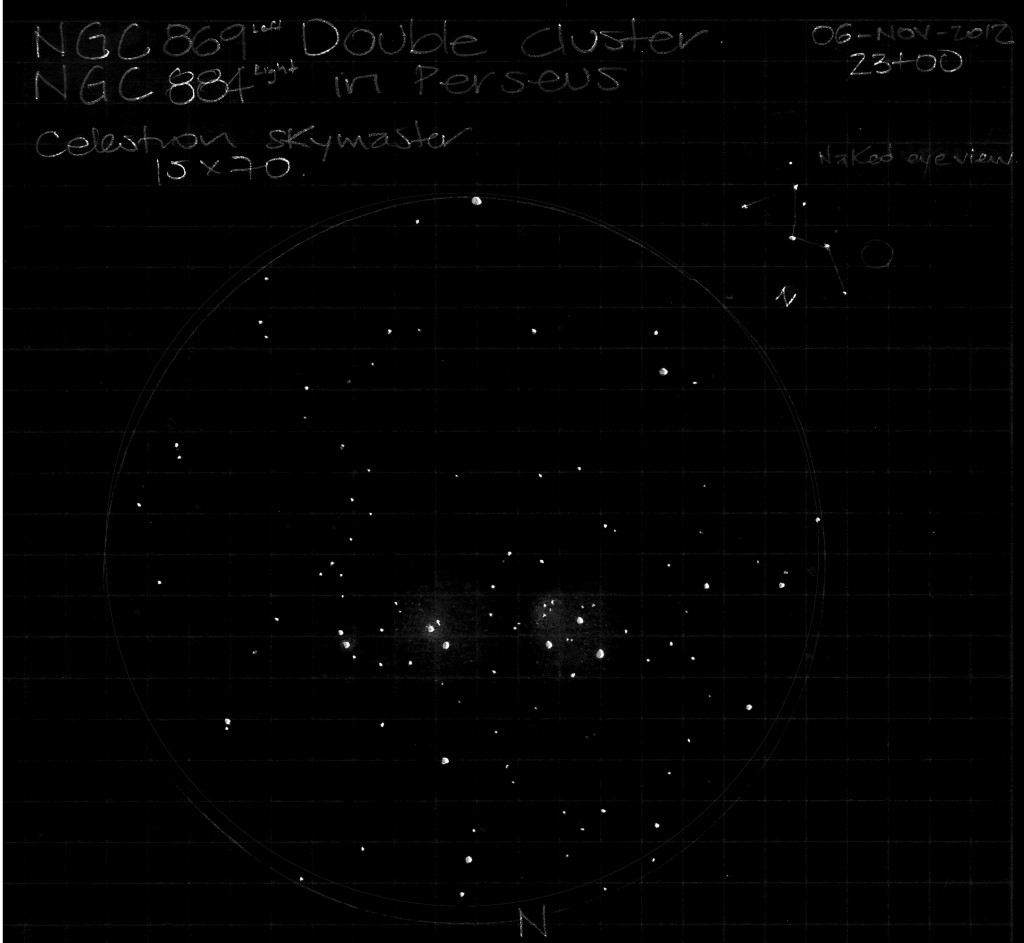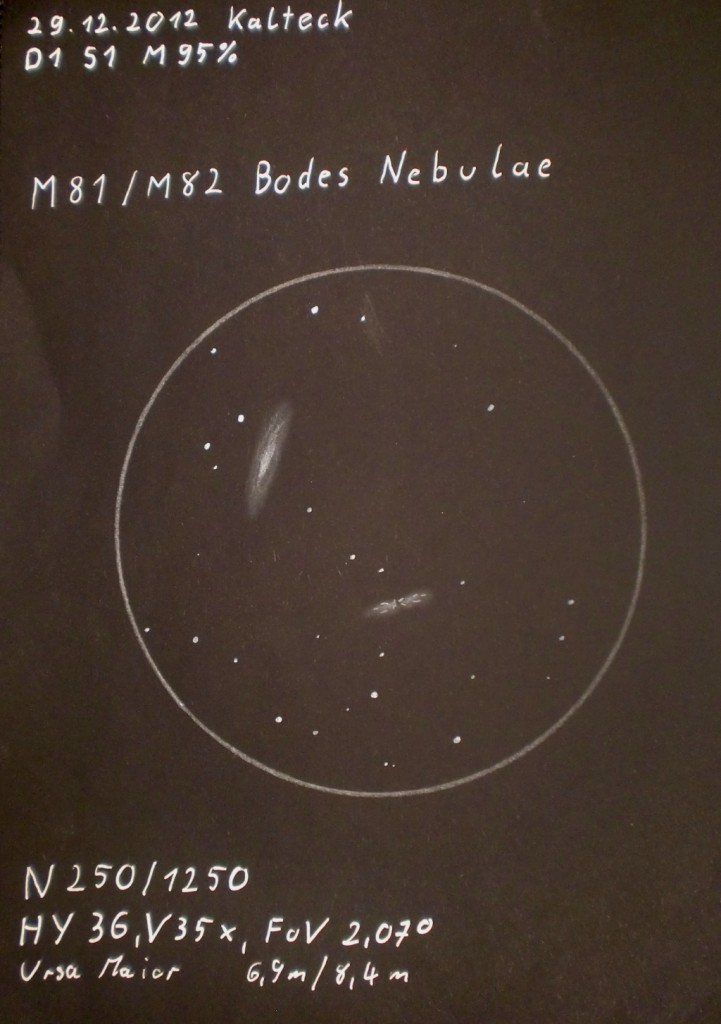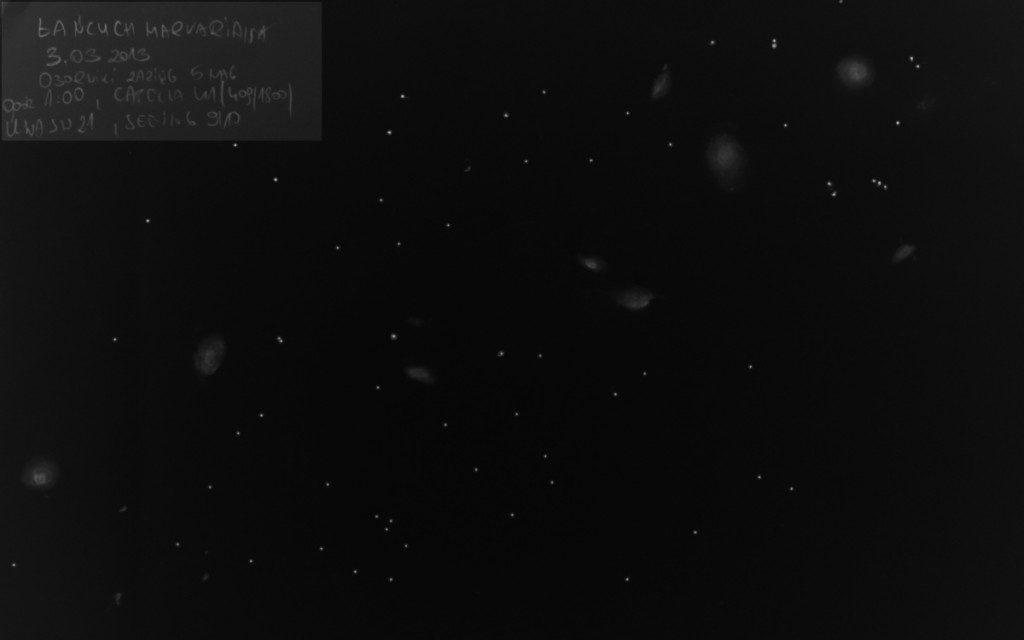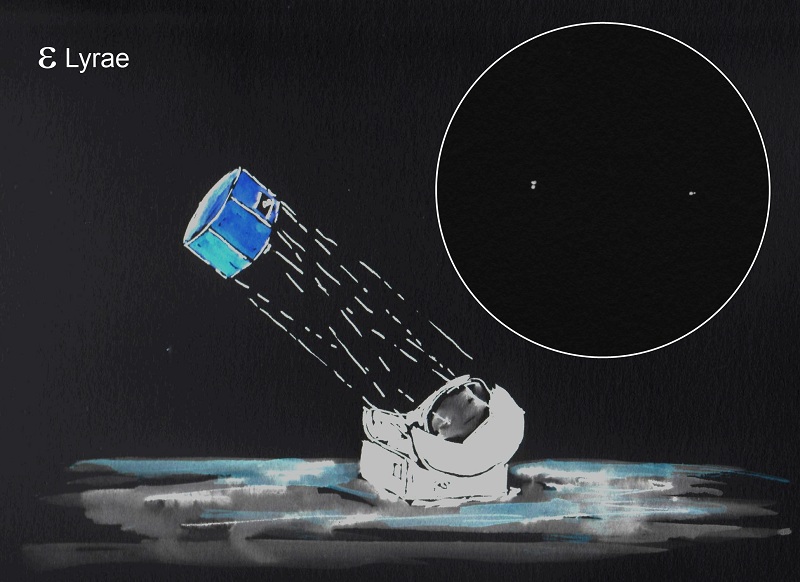
Hello astro-sketchers, here my last contribution…
Object Name (Epsilon1/2 Lyrae the Double double)
Object Type (Multiple Star)
Location (Château de Berne – Provence – France)
Date (May 8th)
Media (watercolor and ink, inverted while scanning)
Epsilon Lyrae, the “double-double” star, seen in the 450mm Dobson of my friend Philippe.
During this 4th yearly animation made in the “Château de Berne”, a nice vineyard domain in Provence, I had the opportunity to sketch this difficult multiple star.
The northern star is called ε1 and the southern one is called ε2; they both lie around 160 light years from Earth and orbit each other. In this big 450mm eye, both stars of the binary can be further split into binaries; that is, the system contains two binary stars orbiting each other. The component stars of ε1 have magnitudes of 4.7 and 6.2 separated by 2.6″ and have an orbital period that can only be crudely estimated at 1200 years, which places them at roughly 140 AU apart. The component stars of ε2 have magnitudes 5.1 and 5.5 separated by 2.3″, orbit perhaps half that period. ε1 and ε2 themselves are not closer than 0.16 light years apart, and would take hundreds of thousands of years to complete an orbit.
I made the watercolor taking into account the further inversion needed, that means black for white and orange for blue, for example.
Astro sketch website : http://astro.aquarellia.com
Clear sky to you all !
Michel Deconinck


